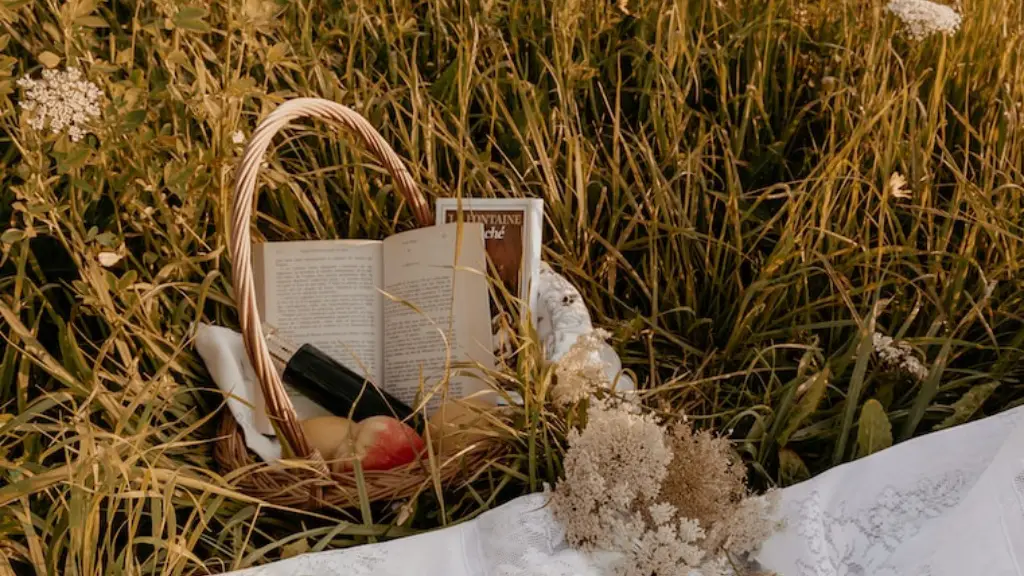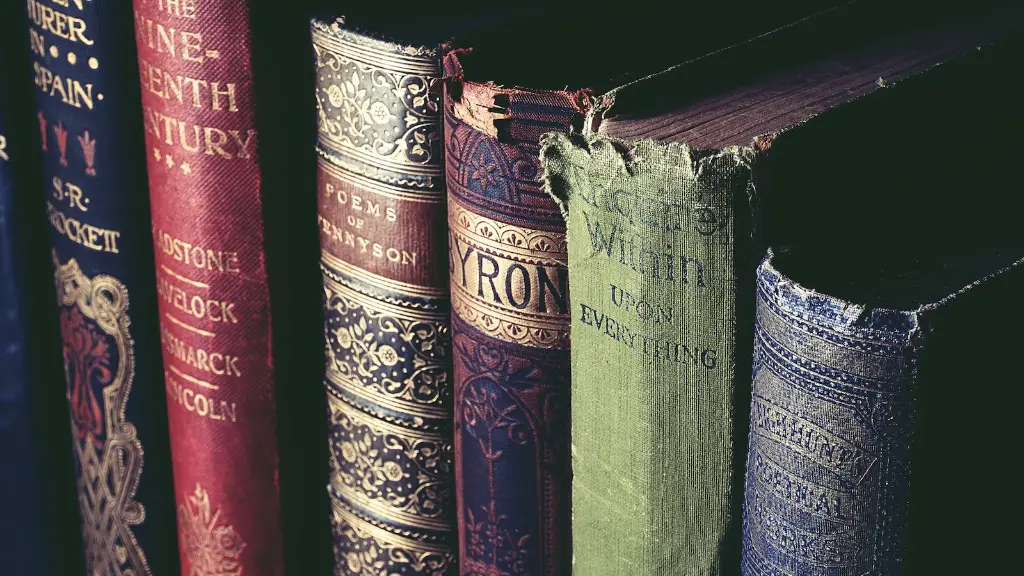The Meaning of a Stanza in Poetry
In poetry, a stanza is a collection of lines that form a unit. It usually has a specific structure and is numbered with a letter or a Roman numeral. Stanzas are used to divide a poem and can consist of two or more lines. The number of lines in a stanza varies depending on the kind of poem, but typically ranges between four and eight lines.
A stanza is effective in organizing a poem into distinct sections with distinct ideas that are related to each other. Poets use stanzas to create a visual effect on the page and the reader, as well as to convey a message. Depending on the poem, stanzas can be used to create a rhythm, a rhyme scheme, or both. Some common stanza forms include a single line, a couplet, a triplet, a quatrain, a sestet, and an octave.
A single line stanza may consist of a single word or short phrase, stating a thought or expressing an emotion. Couplets are two-line stanzas with a specific rhyme pattern. Triplets, or tercets, contain three lines, usually with a specific rhyme scheme. Four-line stanzas are called quatrains, while six-line stanzas are known as sestets. An octave is an eight-line stanza, and it is often used to express a central theme or idea.
In many poems, stanzas are separated by blank lines or white space, which further emphasize the beginning of each unit. Furthermore, the use of enjambment, which is the continuing of a sentence across multiple lines, can help form a unity among stanzas.
The choice of stanza structure is an important part of writing a poem and it helps to evoke certain emotions and ideas. For example, a single line stanza may evoke feelings of isolation, while a quatrain is a way of conveying a narrative. Depending on the number of lines and the specific rhyme scheme, stanzas can emphasize certain aspects of the poem.
When it comes to understanding a poem, it is important to know what each stanza is describing. Stanzas can help create an internal organization to a poem, allowing the reader to see how each part works together. Each stanza typically contains its own idea, meter and rhythm, all of which contribute to the poem as a whole.
The Purpose of Stanzas in Poetry
The purpose of a stanza in poetry is to build a structure for the poem and to provide an organized way of presenting different ideas or concepts. Stanzas provide an effective way to group related thoughts in order to move the poem along. By dividing a poem into accessible units, a poet can engage the reader and move them through the different ideas of the poem more easily.
Stanzas in poetry often contain specific rhyme schemes that make it easier for the reader to understand the poem. Rhyme in a poem enforces the idea of unity, which can be helpful in making sense of the poem’s themes and messages. The use of rhyme and repetition of sounds can help add emotional depth to the poem by conveying deeper feelings.
The use of different stanza forms can also help a poet express certain feelings or emotions. For example, a quatrain is often used to tell a story, while a triplet can be used to emphasize a particular idea or thought. The number of lines in a stanza will also affect the way it is read, as longer stanzas can convey a sense of timelessness, while shorter stanzas are often associated with brevity.
The structure of a poem is essential in understanding its message and the poet’s intent. In general, shorter stanzas can help to convey feelings of urgency and intensity, while longer stanzas often provide a more reflective and reflective atmosphere. Different poem structures can also evoke a variety of emotions and feelings.
Poetic Forms Using Stanzas
Poets often use stanzas to express a particular form or style of poetry. Different poetic forms use different types of stanzas or stanza lengths to create a distinct form. The sonnet is one of the most common and recognizable forms that uses stanzas. A sonnet consists of fourteen lines that are broken up into three quatrains and a couplet. Italian and Shakespearean sonnets are two common types of sonnets that both use a specific rhyme scheme and meter.
Haiku is a popular Japanese poetic form that uses three line stanzas. Each line of the haiku is structured so that the first one contains five syllables, the second seven syllables, and the third five syllables. This form often emphasizes a specific moment or mood, and it can evoke feelings of tranquility and serenity.
Limericks are a form of humorous poetry that consists of five-line stanzas, each of which has a rhyme scheme of AABBA. This form often tells a story in an amusing and lighthearted way, and sometimes includes a sarcastic twist at the end.
Other poetic forms that use stanzas include the villanelle, pantoum, rondeau, and sestina. Stanzas are also used for long narrative poems, such as epics, which often use long, intricate stanzas and meter.
Exploring Stanzas in Poetry
Stanzas in poetry play an important role in helping the poet create a structure for the poem. By breaking the poem into distinct sections, the poet can more effectively convey the overall message of the poem and engage the reader. Different forms of poetry can employ a variety of stanzas and lines to create a specific type of poem. Whether it is a sonnet, a haiku, or a limerick, stanzas can help create an effective and engaging poem.
Exploring the various forms of poetry to discover how different stanza structures are used, can help to gain a deeper understanding of the poem, the poet’s intent, and the emotion the poet is trying to convey. By analyzing different stanza forms and their use of meter, imagery, and rhyme, a reader can gain further insight into the poem.
The Role of Meter in Poetry Stanzas
The role of meter in poetry is to help create a rhythm and a sense of unity. Meter can be used to evoke a specific emotion or feeling, and it can also help to emphasize the meaning of the poem. Depending on the type of poetic form, meters can be anapestic, dactylic, iambic, trochaic, or spondaic. When analyzing a poem, it is important to consider the meter of the poem and how it affects the overall meaning of the stanza.
Meter and rhythm can give a poem a sense of unity as well as a sense of movement. In some cases, readers can detect a certain pattern in the poem by looking at the length of the lines and the arrangement of the syllables. Each line in a stanza can have a different meter, and by combining the different meters the poet can create a more dynamic poem.
When reading a poem, it is important to look at the meter of the poem in order to fully understand the poet’s intent and the meaning of the poem as a whole. For example, a dactylic meter can give a poem a sense of urgency, while an iambic meter can create a feeling of sorrow or regret. By looking at the meter of a poem, a reader can better understand the underlying emotions of the poem.
How to Use Stanzas in Poetry
When writing a poem, it is important to consider how a stanza will help to convey the poem’s message. Some poems may be divided into multiple stanzas, while others may have a single stanza. By carefully choosing the type of stanza and the meter, a poet can create an effective and engaging poem. A poet may also choose to use enjambment in order to create a sense of continuity and unity among the stanzas of the poem.
When deciding which type of stanza form to use, it is important to consider the overall message or theme of the poem. Different types of stanzas can evoke different emotions and feelings, and it is important to choose a stanza form that will best convey the poem’s overall message. For example, shorter stanzas may be more effective for expressing a feeling of urgency, while longer stanzas may work better in conveying a reflective mood.
Furthermore, a poet may choose to use specific rhyme schemes in order to create an effective and engaging poem. Rhyme can help to create an internal structure and unity among different stanzas, allowing the poem to flow more easily and allowing the reader to more easily grasp the main idea of the poem.





